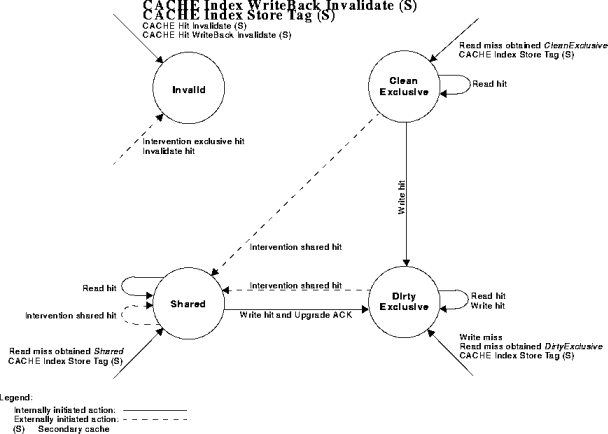





4. Cache Organization and Coherency

4.3 Secondary Cache
The R10000 processor must have an external secondary cache, ranging in size from 512 Kbytes to 16 Mbytes, in powers of 2, as set by the SCSize mode bit. The SCBlkSize mode bit selects a block size of either 16 or 32 words.
The secondary cache is two-way set associative (that is, two cache blocks are assigned to each set, as shown in Figure 4-6) with an LRU replacement algorithm.*1
The secondary cache uses a write back protocol, which means a cache store writes data into the cache instead of writing it directly to memory. Some time later this data is independently written to memory.
The secondary cache is indexed with a physical address and tagged with a physical address.

Figure 4-6 Organization of Secondary Cache
Each secondary cache block is in one of the following four states:
A secondary cache block can be changed from one state to another as a result of any of the following events:
- primary cache read/write miss
- primary cache write hit to a Shared or CleanExclusive block
- secondary cache read miss
- secondary cache write hit to a Shared or CleanExclusive block
- a CACHE instruction
- external intervention shared request
- intervention exclusive request
- invalidate request
These events are illustrated in Figure 4-7, which shows the secondary cache state diagram.

Figure 4-7 Secondary Cache State Diagram






Copyright 1995, MIPS Technologies, Inc. -- 29 JAN 96



Generated with CERN WebMaker
















